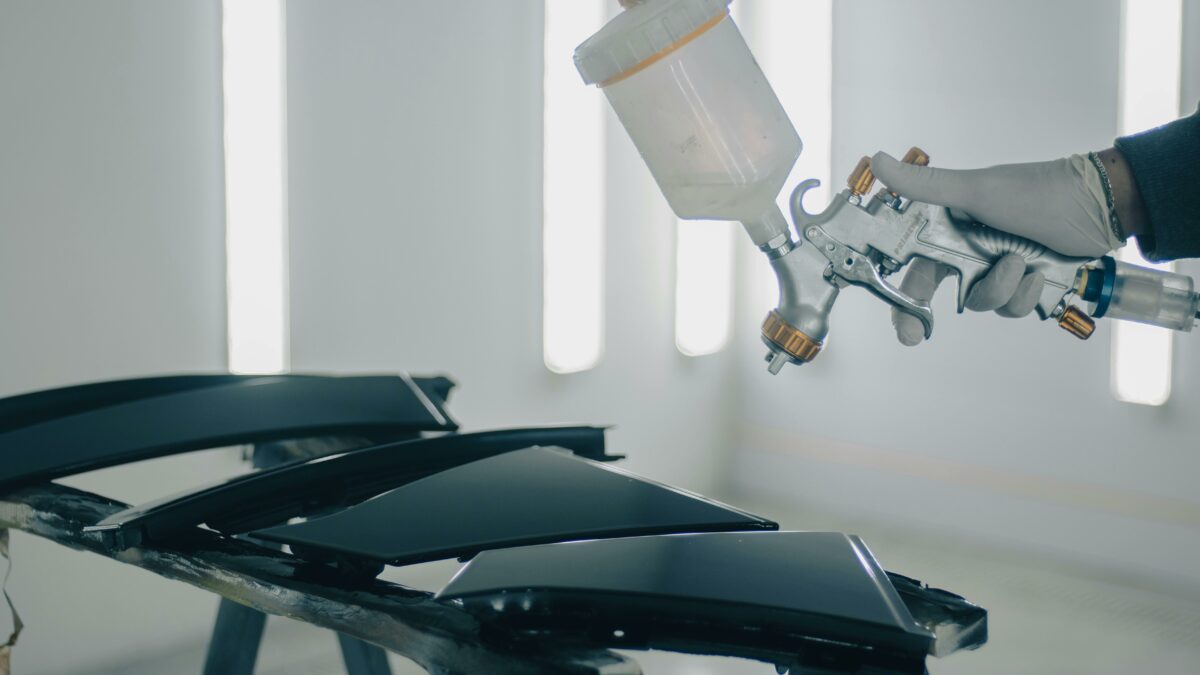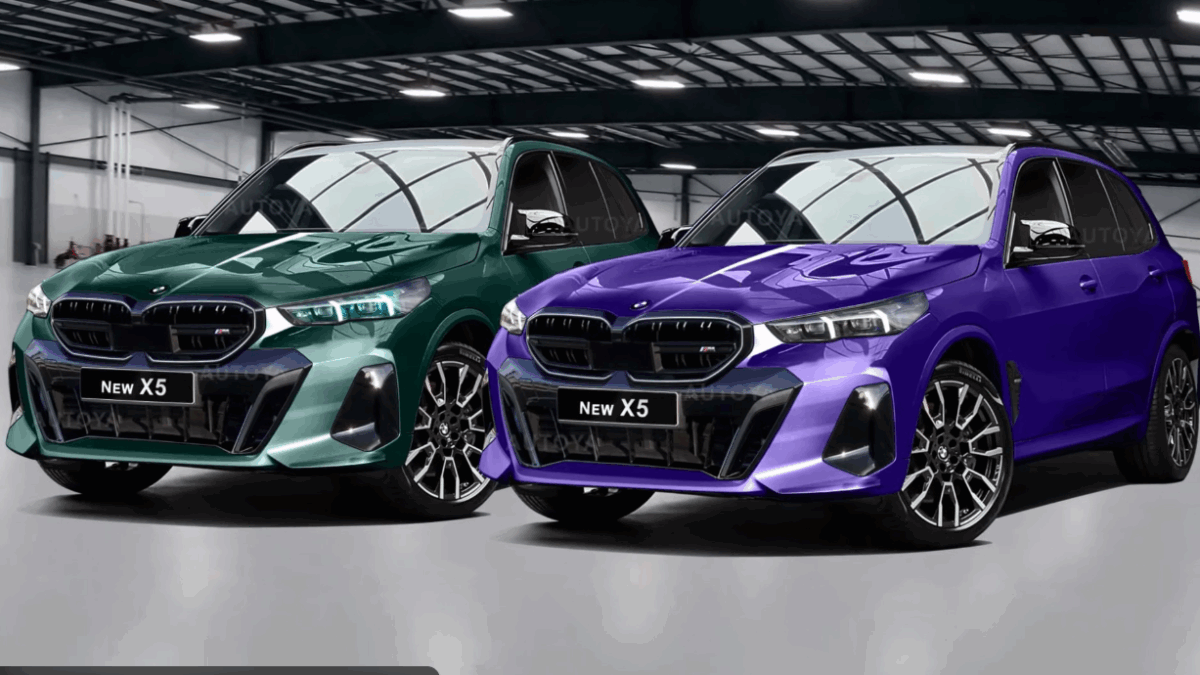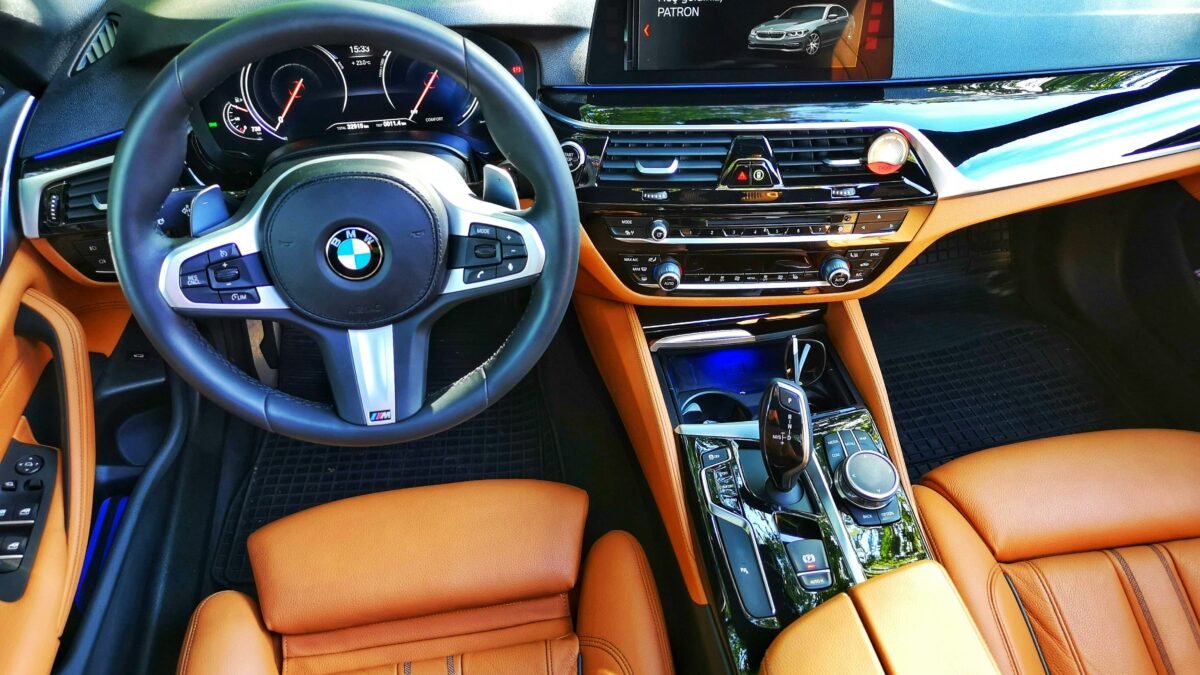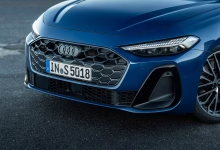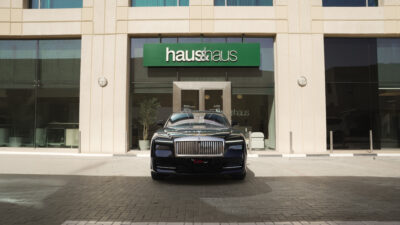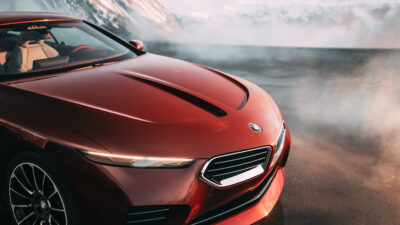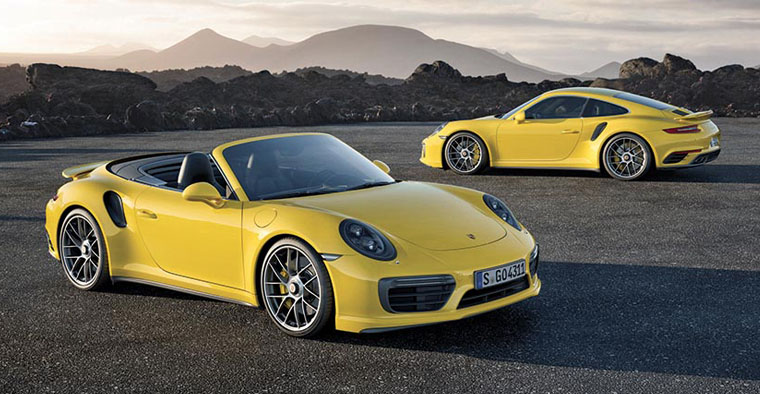
Porsche 911 Turbo S feature
Venerable model keeps getting better
Just when you think the Porsche 911 Turbo S can’t possibly get any better, the German luxury manufacturer proves everyone wrong releasing a new version that is faster, prettier and even more advanced.
Unveiled at the North American International Auto Show in Detroit in January, the 2017 Turbo S is being offered in both coupe and convertible form factors, making 20 additional horsepower and boasting a whole host of changes.
Before we dive into specifics, a look back at models past. A Turbo trim has been offered in the Porsche lineup since the early 1970s, and at the time the gnarly, snail-powered monster was truly something unique. Fast forward 40-plus years, however, and virtually all 911s at present have been given twin-turbos of their own, including the Carrera 4 Turbo that offers a lot of the same fun at nearly half the cost. So how and why is Stuttgart, Germany’s latest and greatest worth the hefty sticker price? Let’s break it down.

If it ain’t broke…
Don’t expect a ground-up reimagining of the exterior, as any enthusiast can tell you such methodology is simply not part of this particular manufacturer’s DNA. Subtle but effective enhancements is the name of the game here, such as the redesign of the front fascia sporting side aerodynamic air blades. The LED running lights have been split into two long strips and the centre air intake gains a fin, together bestowing upon the car the illusion of being wider.
Other upgrades include different seven-spoke centre lock wheels measuring 20×9 front and 20×11.5 rear, deletion of the door handle recess covers for a more streamlined look, reworked three-dimensional tail lamps with four-point brake lights, and a separated deck lid featuring outer longitudinal vents and a centre louvred cover to promote increased air induction for the engine. The dual exhaust tips now resemble quadrangles, finished in black chrome to differentiate from the regular chrome non-S variants.

Easier infotainment
All 911s, regardless of grade, receive a newly developed iteration of the Porsche Communication Management (PCM) infotainment and navigation system. Thankfully easier to use than prior examples hampered with too many buttons and switches, PCM utilizes a seven-inch multi-touch monitor integrated into the centre console that recognizes handwritten inputs. The built-in GPS can access Google StreetView and Google Earth, as well as real-time traffic information. The process of connecting a compatible smartphone is much simpler, and one can do so via Wi-Fi, Bluetooth or physical cable. Once paired, select vehicle functions can be controlled remotely using an app.
Although the only soundtrack I normally prefer listening to while on the road is the roar of the motor mounted behind the front seats, the 12-speaker Bose stereo sounds fantastic. If you can pony up a little more dough, the 821-watt option by German mobile audio specialist Burmester is even better.
The aforementioned motor is still a force-fed 3.8-litre six-cylinder, and as alluded to in the beginning has been massaged with a larger turbocharger to produce a total of 580 horsepower and 750 Nm of torque. A new dynamic boost function prevents psi from dropping when the accelerator is briefly released, so the engine responds to throttle inputs much quicker than previously.

New Sport Response button
The popular Sport Chrono Package is now standard equipment on all Turbos. Besides the nifty stopwatch it comes with atop the dash and a GT sport wheel inspired by the 918 Spyder hybrid supercar, it provides user-selectable drive mode settings like Normal, Sport, Sport Plus or Individual. For instance, Sport Plus alters the Porsche Doppelkupplung (PDK) dual-clutch automatic gearbox shift points and stiffens up the suspension, among other things, to allow for a more spirited driving experience. Individual gives the operator the ability to fine tune settings according to his or her liking and store them in the computer. Rounding out the package is a Sport Response button that when pressed, preconditions the powertrain for the maximum possible performance for up to 20 seconds.
What all this results in is the fastest Turbo S offering to date. Savage is the only adjective I can think of to describe the acceleration, capable of shooting the car from 0 to 100 km/h in 2.8 seconds, .01 seconds faster than its predecessor. Top speed is 330 km/h, an increase of 11 km/h. Despite the extra kick-in-the-pants, advancements in engine and transmission management have resulted in better fuel economy than ever, somewhere in the 9.1 L/100 km range for mixed city and highway use.
Driving at the limit
On the safety side of things, the Porsche Stability Management (PSM) System gets a Sport Mode feature too, raising the threshold higher when activated, so that the limits of the car can be reached more closely before PSM kicks in to restore vehicle composure. There’s also an active roll stabilization program, ceramic brakes, radar-based lane-change assist, park assist sensors, LED headlights with the Porsche Dynamic Light System and a neat front lift aid that can raise the nose by 40 millimetres to clear pesky driveway includes or parking curbs.
Still have any doubts the next-generation Porsche 911 Turbo S is worth it? If not, the car rolls off assembly lines this spring.


